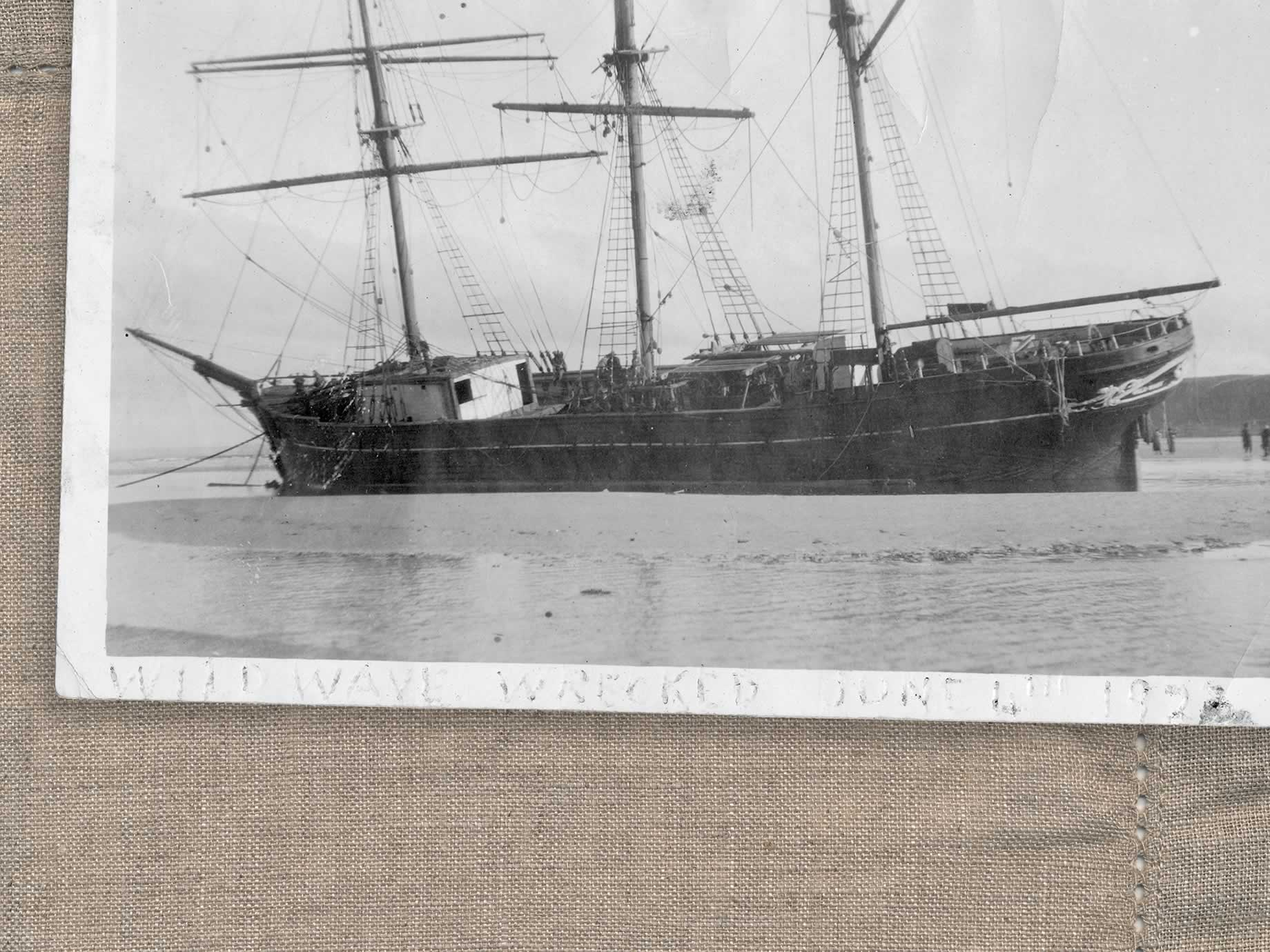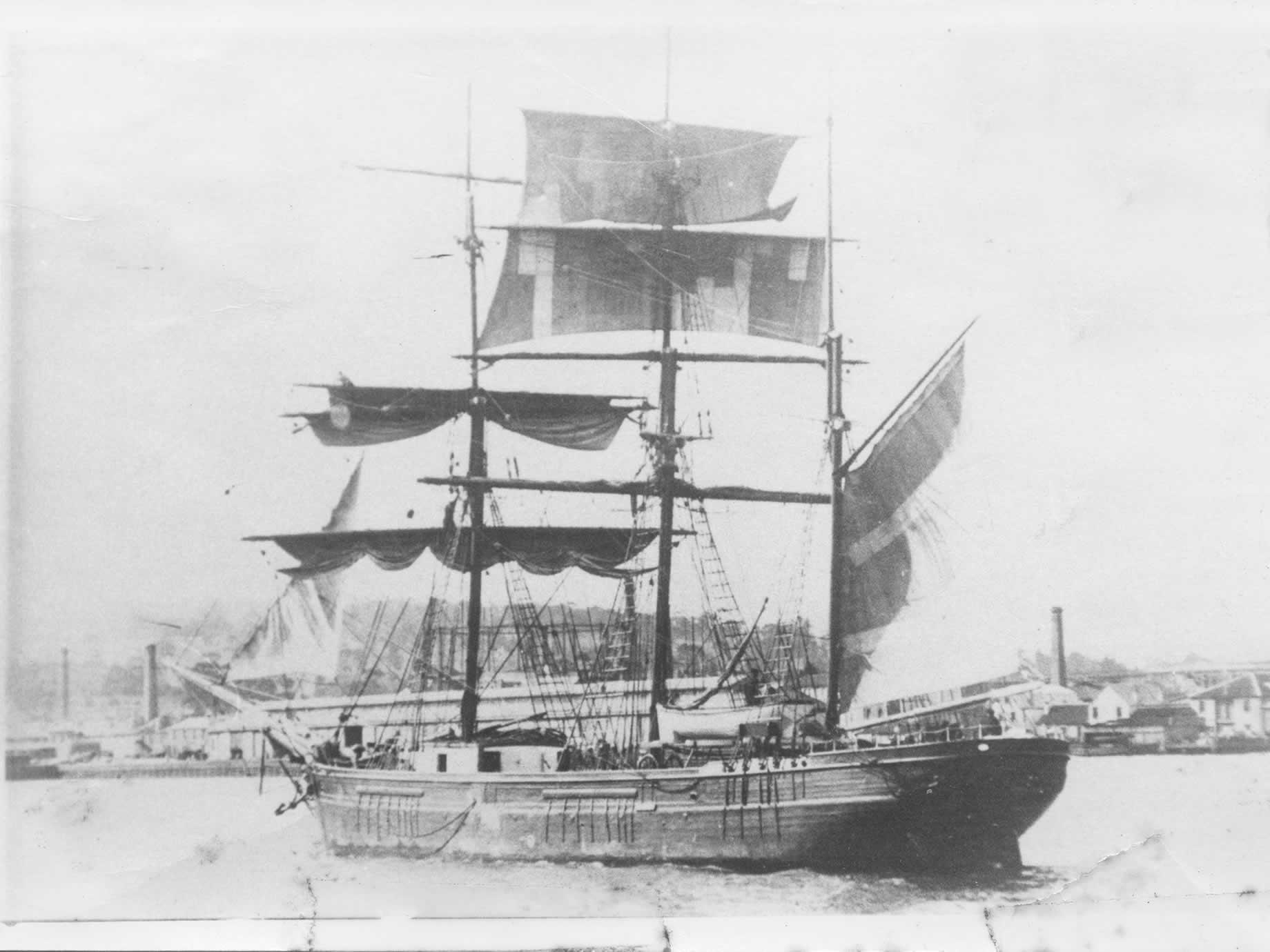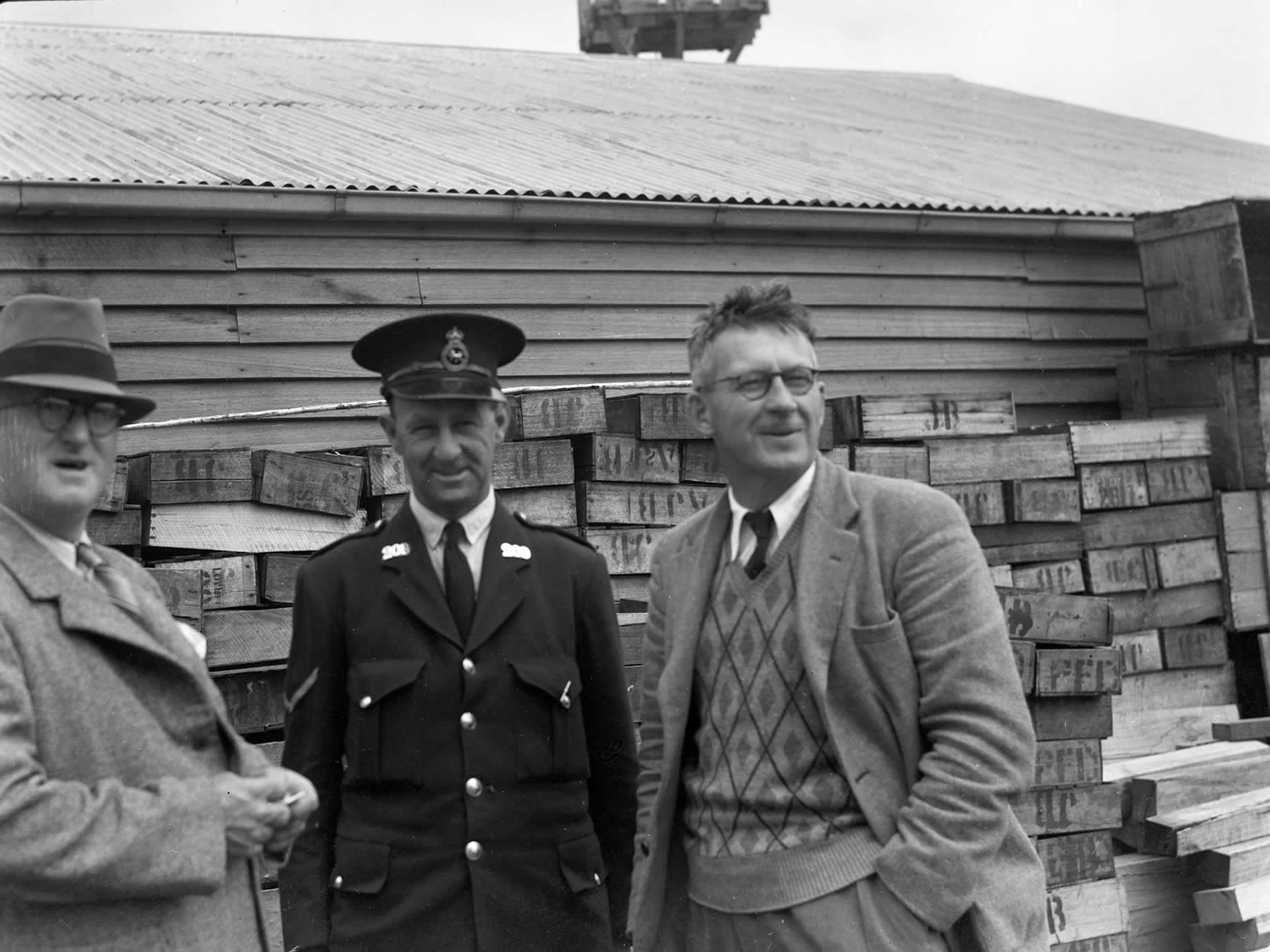1 Marine Park
Wharf Road

Your walk begins at Marine Park overlooking Little Wharf where the bustling life of old Stanley was once centred, and on Wharf Road where Meg Eldridge, the town’s most famous writer and artist, grew up in the 1920s.
Here, Meg would want you to take a moment to remember all the brave souls lost at sea. Her earliest memory was of a shipwreck when, as a two year old, she was carried down to the wharf on her father’s shoulders to witness the stranding of the Wild Wave on Tatlow’s Beach. Over the years the wreck became a children’s playground – you might even spot remnants of it now at very low tide.
The wharves were always a great place to fish. Meg’s granddad, George Cooper, who first came to Stanley in 1920 with his wife Lily, was a master at the pastime. Meg would stand at George’s side and watch as he landed ling, trevally and snapper from out of the bay using just a hand line. Imagine the wharf busy with produce boats carrying prized Circular Head potatoes heading for mainland ports. And cray boats unloading their catch from ketches all named after women: Ada Burgess, the Lady Brassey, and later the Rita Mae or Ella Rose. Fred Ferguson, who rang the church bell on Sundays, is swinging a bag of potatoes onto his back as if it were a bag of sweets. This is how the Marrawah steamer was loaded, ready for its regular Sunday crossing to Melbourne.
Look upwards. Meg’s alternative playground was The Nut, a gigantic lump of volcanic rock most likely named by sailors prior to the 1850s when the name was first recorded.
Listen
Listen to the story of this location while you walk
View Map
Explore the Stanley Heritage Walk route on our map of the region
Image gallery
Images gathered from Meg’s personal albums and other historical sources


- ../../../assets/gallery/large/1/1-children-playing-1963.jpg

- ../../../assets/gallery/large/1/1-ab71313694.jpg

- ../../../assets/gallery/large/1/1-marrawah-loading-potatoes.jpg

- ../../../assets/gallery/large/1/1-stanley-wc206-6069-034.jpg

- ../../../assets/gallery/large/1/1-boats-anchored-at-little-wharf-c1890.jpg

- ../../../assets/gallery/large/1/1-bullockteam-old-wharf-1890.jpg

- ../../../assets/gallery/large/1/1-fishermen-wc206-6074-038.jpg

- ../../../assets/gallery/large/1/1-foreshore-wharf-1900.jpg

- ../../../assets/gallery/large/1/1-little-old-wharf-1890-potatoes.jpg

- ../../../assets/gallery/large/1/1-marrawah-84-15655-041.jpg

- ../../../assets/gallery/large/1/1-old-wharf-1880ish.jpg

- ../../../assets/gallery/large/1/1-old-wharf-c1940.jpg

- ../../../assets/gallery/large/1/1-old-wharf-postcard.jpg

- ../../../assets/gallery/large/1/1-picnic-at-old-racecourse-1928-meg-front-centre.jpg

- ../../../assets/gallery/large/1/1-shipping-at-old-wharf-1870.jpg

- ../../../assets/gallery/large/1/1-shipping-old-wharf-1890-with-megs-favourite-punt-in-foreground.jpg

- ../../../assets/gallery/large/1/1-ss-marrawah-1925.jpg

- ../../../assets/gallery/large/1/1-ss-sydney-at-austins-wharf-c1930.jpg

- ../../../assets/gallery/large/1/1-stanley-state-school-1930.jpg

- ../../../assets/gallery/large/1/1-stanley-wc38-1079-025.jpg

- ../../../assets/gallery/large/1/1-swimming-race-wc206-6063-028.jpg

- ../../../assets/gallery/large/1/1-swimming-race-wc206-6065-030.jpg

- ../../../assets/gallery/large/1/1-tallships-little-old-wharf-1890.jpg


